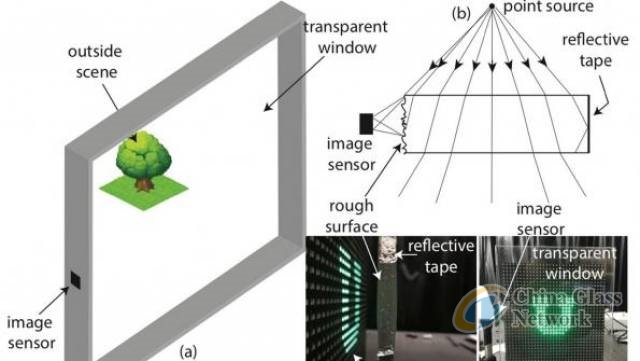Post Time:Aug 30,2018Classify:Industry NewsView:1167
Using computational imaging for reverse image reconstruction, researchers at the University of Utah were able to record readable images from objects as seen through a pane of glass, merely from collecting the scattered light rays at one rough edge of the panel fitted with a lens-less CMOS image sensor.
Unlike conventional cameras that block the view from the scene they are recording (with their sensor facing the object), here the sensor is turned 90 degrees away from the scene, directly facing the rough edge of a transparent window. But since all other edges of the window were designed smooth and covered with reflective tape, the window pane acts as a scattering medium, allowing light rays from a scene to reach the sensor within its acceptance angle.
In their paper "Computational imaging enables a “see-through” lens-less camera" published in the Optics Express journal, the researchers detail how they first had to experimentally measure the scattered image for all the individual emitting points of a LED array to determine the point-spread function (PSF) of the system, that is, the optical transformation from a light source coming from outside the window and eventually reaching the sensor pixels).
Once the point-spread function was determined, they were able to capture images of arbitrary objects (displaying simple patterns with their 32 by 32 LED test array) and reconstruct the images by solving the linear inverse of that function.
Because very few scattered light rays end up reaching the sensor, the distance between the object and the transparent window plays a pivotal role in the quality of the image reconstruction. For their demonstration, the researchers empirically found they would get the best results when placing the LED array 150 millimetres away from the 200 by 225 millimetres plexiglass acrylic pane they used as the window pane. With this set up and a 640 by 480 pixels, 8-bit CMOS image sensor placed on one rough edge, they achieved a spatial resolution of about 0.1 line-pairs/mm, with depth-of-focus of at least 10 millimetres. The paper also reports colour and video imaging.
The researchers anticipate such a see-through imaging technique could find its way in eye tracking applications for augmented-reality glasses or in car windshields (for gaze tracking). Next, to compensate for the absence of lens and the lack of optical focusing capability, they want to explore the possibility of computational refocusing.

Source: glassonline.comAuthor: Shangyi